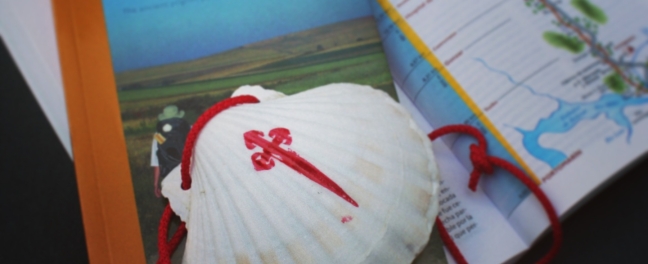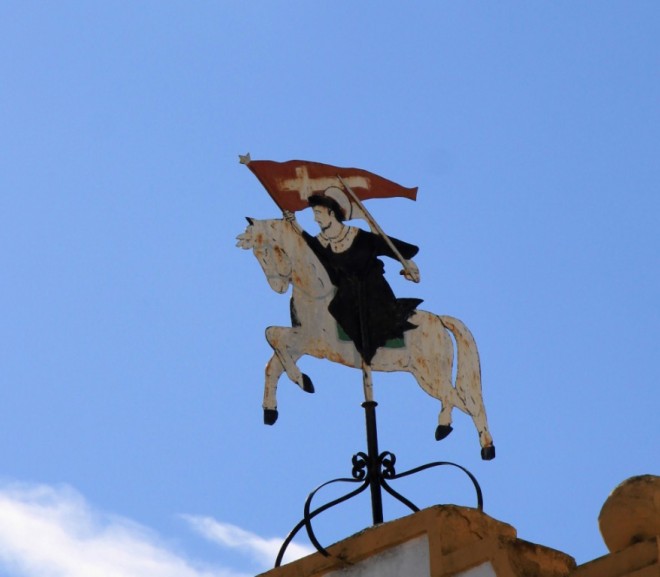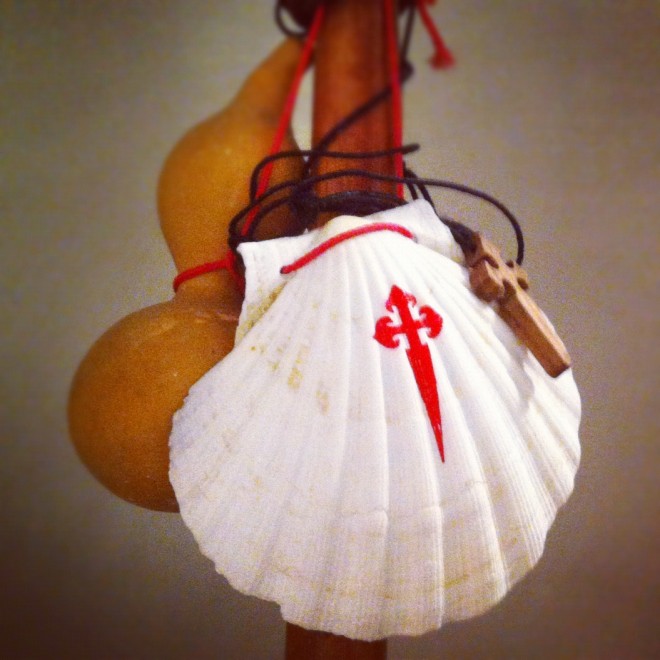Yesterday a friend, having recently returned from the Camino de Santiago, gave me a Pilgrim’s shell he had brought back for me from the Way. This iconic scallop shell or ‘concha’ is a real reminder that the Camino de Santiago is one of the world’s great pilgrimage routes.
Despite the pressures of modern tourism, and a growing secular society that has increasingly disconnected from formal religion, the Camino represents a time to think, a time to escape the mundane and explore one’s own spirituality.
Another friend (who has completed 40 days of ‘Primitive Way’) recently emailed me and said, ‘Have a great time and I hope that the Camino gets you – you will understand what I mean if it does!’
So we fly out tomorrow and despite my initial thoughts, my expectations are beginning to build. I hope that it is more than just a long distance walk in nature with a dear friend.
For those that are not familiar with the Way, the Camino has a truly complex and mystical history. There is much to be read about the subject online and in books, but as a very, very short summary, the legend goes that St. James, one of Jesus’ apostles, left the Holy Land to bring Christianity to the Iberian Peninsula.
Northwest Spain and the Cape of Finisterre has always been a very spiritual place, with a significant Druid history, so it was probably an attractive place for an apostle to start to tell the new Christian story.
Supposedly he had little success and returned to Jerusalem where he was later beheaded by Herod. The legend continues, by suggesting that St. James’ body was returned to Spain and buried near the town of Santiago de Compostela.
The story slowly become weaker and was not really revisited for over 700 years. Yet it reemerged during Spain’s bitter religious wars, the ‘Reconquista’ of Spain from the north African Moors in the 9th century. A shepherd is said to have been guided to a field in the countryside by a star and this led to the discovery of St. James remains buried there. Romantically, this is also said to be one of the reasons behind the city’s name of Santiago (James) de Compostela (corruption of words for countryside and star).
With the intense social political changes in Spain at the time, a Christian ‘hero’ was needed and St. James was adopted as the country’s patron saint and depicted as a Christian force against the Moors – ‘Santiago Matamoros’ – the Moor slayar. (You often see icons of Santiago in Spain on a white stallion, with a sword ready to kill Muslims – insensitive these days to say the least. Below is a photo I took of a weathervane in the village of Alozaina, in the Sierra de las Nieves in Malaga province – it’s on top of the old townhall.)
The Camino route emerged and became a major draw for pilgrims from across Europe in the middle ages and beyond. The Catholic Church recognised the pilgrimage as an ‘indulgence’, a means to seek absolution for sins.
Of course this is a very crude summary, and there are many mystical, historical and political stories that are interwoven to create the Camino de Santiago that we know today, but it helps to some degree put things into context.
Now is has become the focus for hundreds of thousands of people a year to disconnect from their everyday lives and take time to explore their own spirituality.
Oh, and why the scallop shell (concha)? Well lots of mythical stories ansd history are connected with the shell. One story relates how when the body of St. James was returned to Spain it was lost at sea near Galicia and later recovered, covered in shells.
But on a practical level, it is suggested that the clam was a cheap and abundant source of food for pilgrims and the shell was useful to carry as a utensil for eating and as a way of drinking from streams on the way. It is now the icon of the route, and its ridges coming together at one point is an ideal metaphor for the Camino bringing pilgrims together at Santiago de Compostela.
For more info take a look at Cat’s blog here.
Buen Camino!
My partner has already taken the Camino de Santiago and this snap is of his pilgrim’s staff, with scallop shell, cross and gourd.
http://www.caminoguides.com/



























Very excited to hear about your journey while I prepare for my own! Buen Camino!
The Camino is the best! long lasting memories and great experiences. Nice post by the way…. I did it as well from Leon (http://icveritas.com/buen-camino-peregrino/)
Cheers!
Thanks Cynthia. Yes, we’re all set. Flying up tonight to Galicia. So will post again when I get back:-)